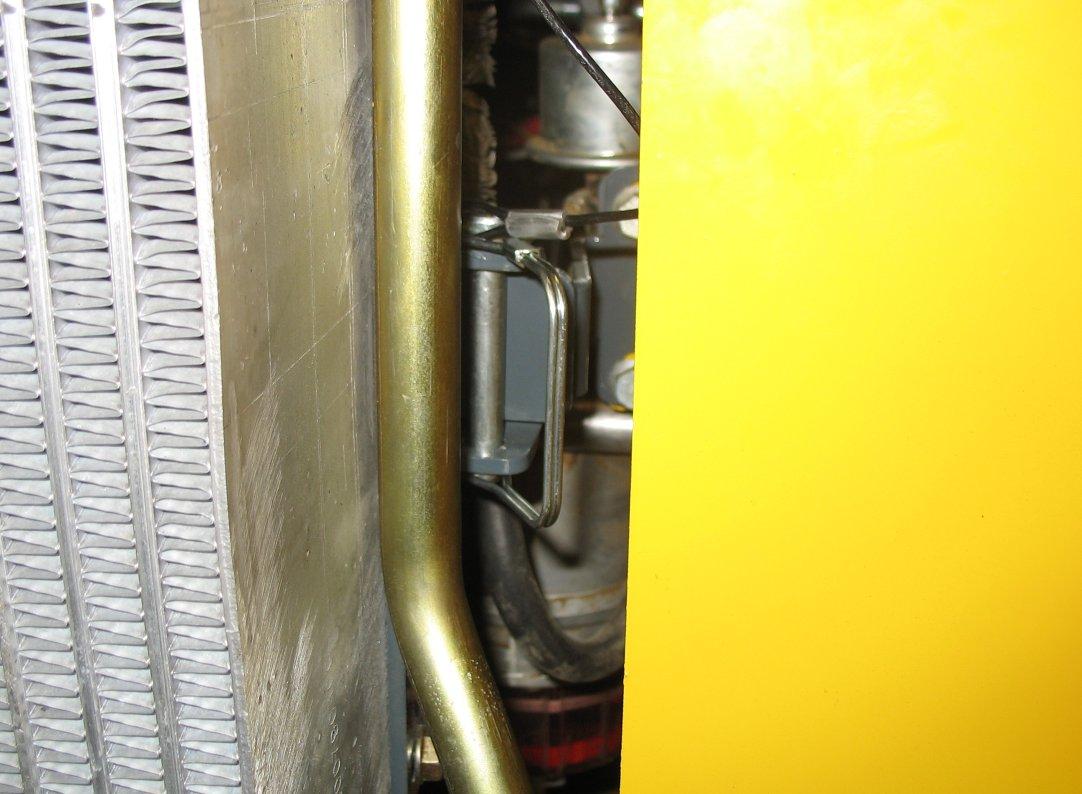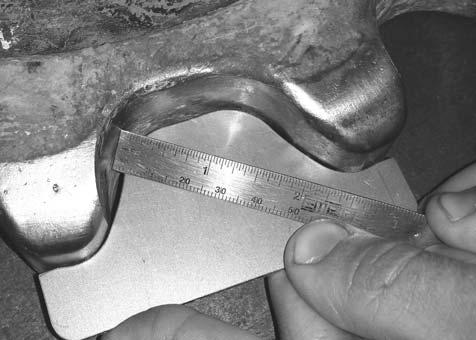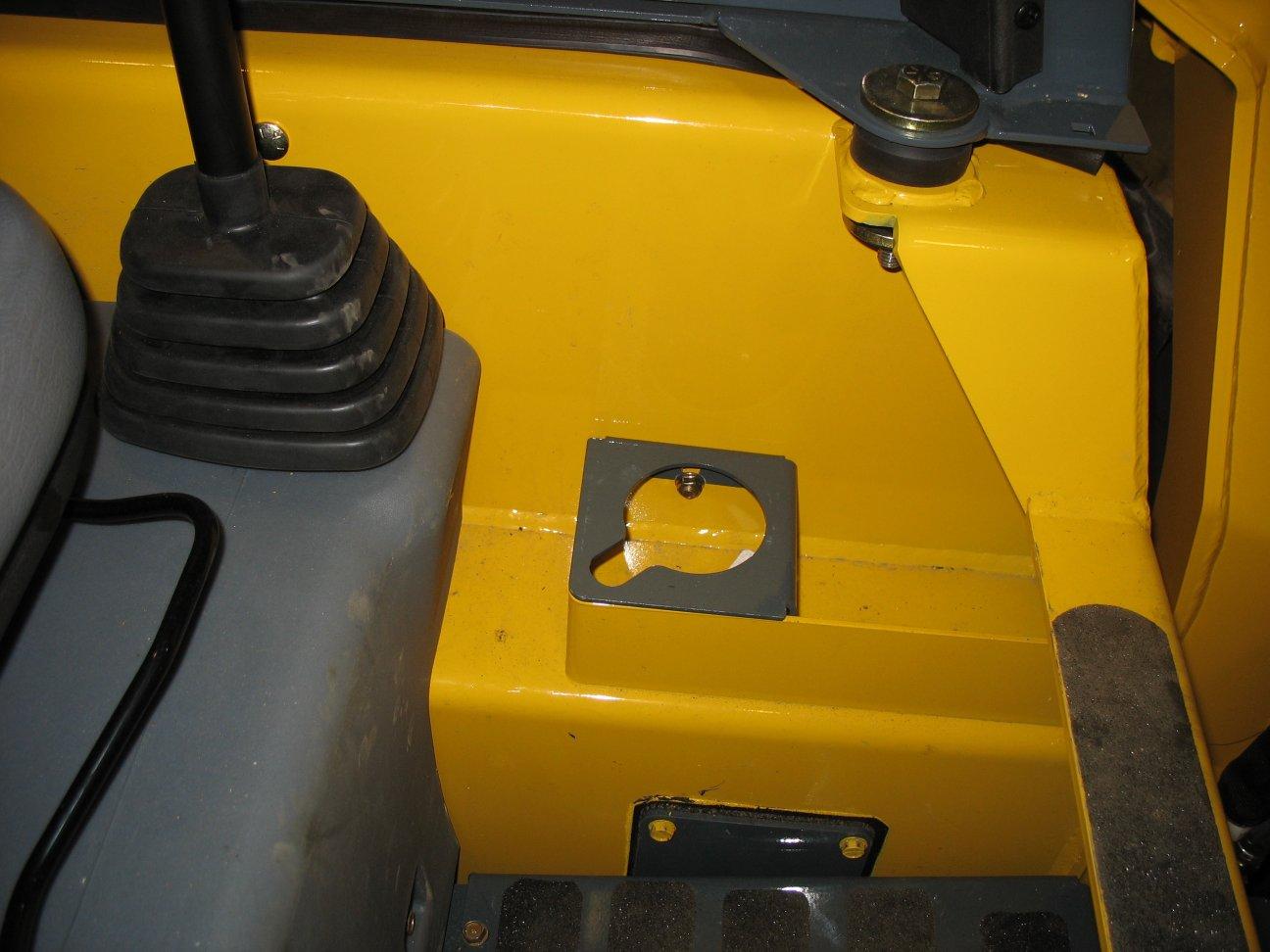Draining/Flushing Cooling System 1. Perform the “Mandatory Safety Shutdown Procedure” on page 14. 2. Wait until the engine has cooled.
Do not remove radiator cap when the coolant is hot. Serious burns could result.
WARNING
3. Slowly loosen radiator cap (P, Figure 101) and allow pressure to escape. Remove cap.
P
4. Position a suitable collection container, with a minimum capacity of 19 L (4 gals.) underneath the radiator. Figure 101 – Radiator Cap
5. Remove radiator drain plug (X, Figure 102) underneath the radiator and allow the coolant to drain into the container. Important: Dispose waste coolant according to environmental laws. DO NOT pour coolant onto the ground or down a drain. 6. Replace the drain plug (X) and tighten securely.
X Figure 102 – Radiator Drain
7. Fill the radiator with coolant. Note: Use a low-silicate ethylene glycol-based coolant, mixed with clean water and supplemental coolant additives (SCAs) suitable for heavy-duty diesel engines. See “Fluid Capacities/Lubricants” on page 187, “Coolant Compound Mixtures” on page 193 and the engine operation manual for additional information. 8. Reinstall radiator cap and tighten securely. 9. Start and run the engine until it reaches operating temperature. 10. Check the coolant level according to “Checking Coolant Level” on page 145.
Hydraulic System Never use your hands to search for hydraulic fluid leaks; use a piece of paper or cardboard to find leaks. Escaping fluid under pressure can be invisible and can penetrate the skin, causing serious injury. If any fluid is injected into your skin, see a doctor at once. Injected fluid MUST be surgically removed, or gangrene may result.
WARNING
146
50950264/G0521





















